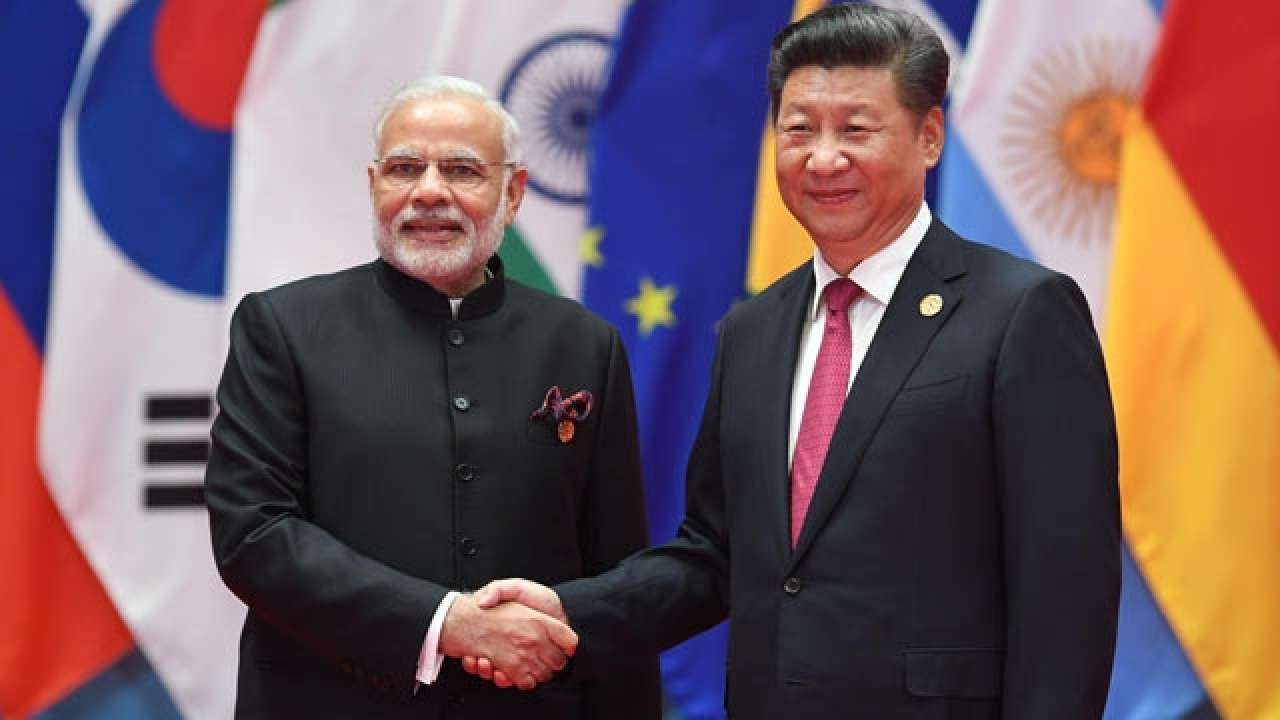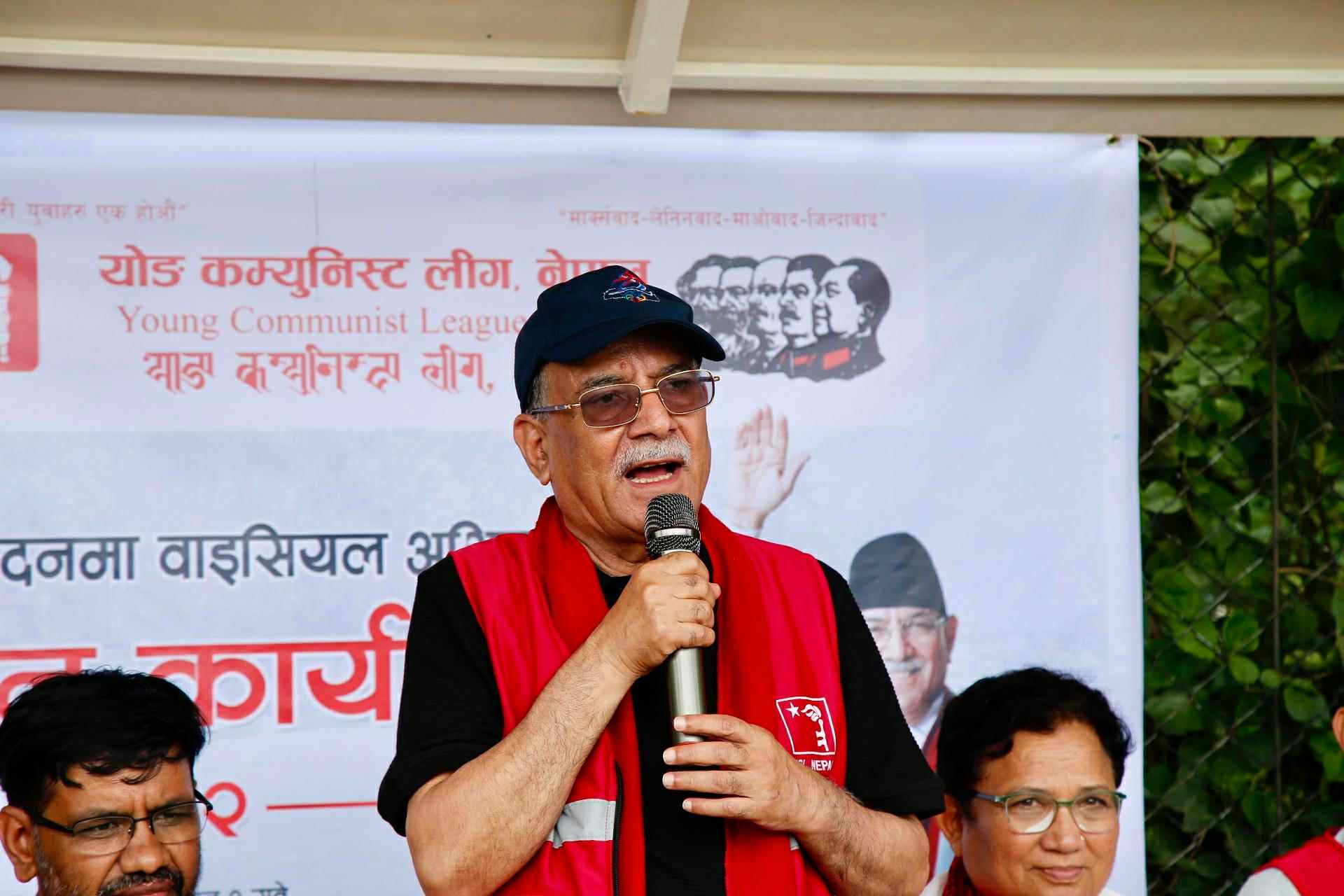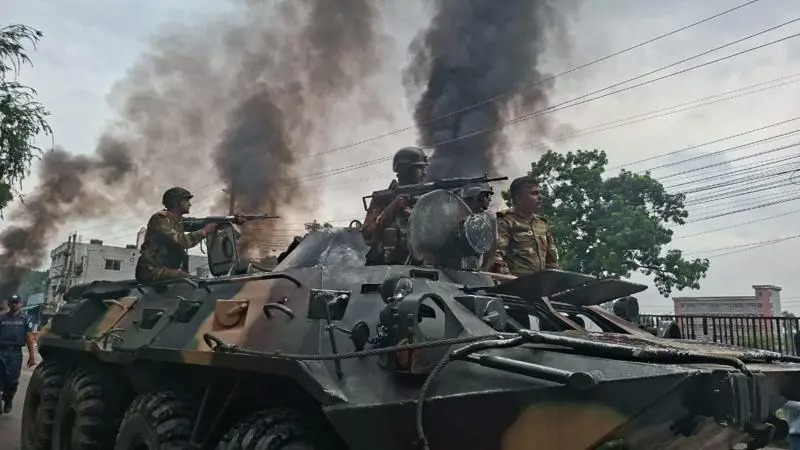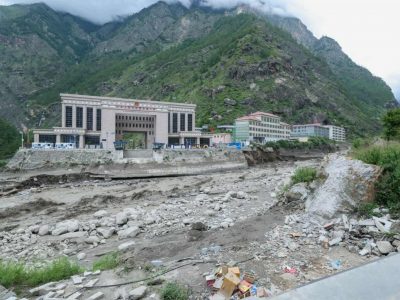Eight reasons why India and China are unlikely to go to war

Image Credit: DCNepal's Nepali portal
While the entire world remained afflicted by a menacing global pandemic, the threat of two nuclear giants India and China going to war loomed on the horizon. Following several tense border stand-offs between the two, an unprecedented clash occurred in mid- June. Twenty Indian soldiers died and many others were injured. The Chinese side did not disclose their casualties because it is speculated their casualty numbers are higher. Since that one ghastly incident, no further clashes have been reported. But, Beijing and New Delhi continue to exchange fiery saber-rattling rhetoric, and also beefing up the front-lines with extra reinforcements and armaments.
Amidst the escalating tensions, however, foreign ministers of both countries met in Moscow in early September during the sidelines of the Shanghai Cooperation Organization (SCO) summit and signed a 5-point plan to explore prospects for a peaceful settlement of the border disputes. This plan is not just a reflection of their mutual desire for peace but also a clear testament that they can ill-afford to go to war. The possibility of more small-scale skirmishes and incidents like the one in June cannot be ruled out but the probability of a full-blown war is highly unlikely because of a number of inhibitors and interconnectedness.
Below listed are eight possible reasons that could inhibit a full-blown war between these two nuclear giants.
1. Avoiding escalation uncertainties: Since the Sino-Indian War back in 1962, besides an incident in 1975 where four Indian soldiers were killed, both sides had exercised maximum restraint. The fact that neither side fired a single shot even during that horrific incident when scores from both sides died, reveals the level of the restraint exercised by both.While India and Pakistan exchanged artillery shells without hesitation during the same period, India has not fired a single round against China and vice versa.
In fact, India-China border can be characterized by S4 realities – standoff, shoving, stones, and sticks. Despite being heavily armed and equipped, the tense stand-offs between these two involve shoving the adversary, pelting stones at each other, and using sticks against each other. Therefore, the incident, in which a large number of soldiers died recently was an aberration, a miscalculated and mishandled unfortunate incident.
In reality, both sides have no appetite for war primarily because both sides fully recognize theinherent risk of escalation and the uncertain and unforeseen consequences of escalation. Since the risk of escalation is tremendously high, neither side has an interest in treading down that uncertain path. One side could fire a bullet and the other side could retaliate with artillery and could eventually snowball into mutual annihilation through the use of nuclear warheads. Therefore, both sides had given strict orders to their troops not to open fire against each other. Hence, the border standoffs between the two are almost comical because they resort to shoving, pelting stones at each other and attacking each other with sticks with their rifles slung over their shoulders. The primitive stone-age manner in which they confront each other is an unequivocal testament to the restraint that both sides exerciseand also a yardstick to illustrate how both sides dread escalation.
2. Avoiding a two-front war: Similar to escalation, both China and India dread fighting war on two fronts. India has consistently had one active front with Pakistan since its independence in 1947. This front has already heated up multiple times in the last several months. Pakistan is already upping the ante both in rhetoric and posturing along the front lines especially after India revoked Kashmir’s special status and locked down Kashmiris. If a war does break out between the two, there is a high probability that Pakistan which has very close ties with China would take advantage of India’s vulnerability. Pakistan could very well coordinate war efforts with China to stretch India. Although India’s military doctrine boasts of an ability to fight a two-front war, doing so with two formidable nuclear adversaries would be extremely challenging for India.
Similarly for China, despite having the largest standing military in the world, it too frets the prospect of a two-front war. While it confronts India on one front, another front in the East could potentially open up against the U.S. China’s aggressive posturing in the Pacific Ocean and South China Sea has greatly aggravated several countries in the region. Countries like Japan, South Korea, Indonesia, Malaysia, Brunei, Philippines and Vietnam all have disputes with China over demarcation of international borders in the South China Sea. Its unsettled issue with Taiwan too is another possible front in the East. The U.S. has explicitly labelled China as its primary threat and is determined to counter China. Therefore, there is a strong probability of the U.S coming to aid India during a war or flanking China in the East with its allies.
The intent and commitment of U.S. is displayed by the deployment of two aircraft carriers USS Nimitz and the USS Ronald Reagan to the South China Sea when India-China tensions escalated. The Nimitz Carrier Strike Group was also deployed to the Indian Ocean and carried out joint exercises with the Indian Navy. Plus, India is also part of Quadrilateral Security Dialogue (QUAD), a strategic alliance between the U.S, Japan, Australia and India. Given that QUAD was formed specifically to counter China’s growing military and economic prowess in the region, there is a possibility of others in the QUAD opening a new front against China from the East.
3.Nuclear deterrence: One of the primary inhibitors that dissuades both sides from going to war is nuclear deterrence. When tensions between India and Pakistan escalate, the “N” word gets thrown around very easily just to warn the other side. Between India and China, however, both sides have maintained astounding restraint; neither side has flaunted their nuclear capabilities. Both sides appear comfortable with their nuclear postures and cognizant of the other side’s nuclear doctrines that declare a “no first use” (NFU).
Both are astutely aware of the implausibility of a nuclear confrontation because the military theory of “Mutually Assured Destruction (MAD)” posits that if one nuclear state were to use nuclear weapons against any other nuclear state, it would ultimately result in the annihilation of both. Perhaps deterred by the concept of MAD, no two nuclear countries have gone to a full-fledged war up to now. India and China too are certainly deterred by MAD which is reflected through the restraint they seem to exercise while dealing with each other.
4. Different Enemies: India and China have unsettled borders and they have gone to war in the past. In their strategic outlooks and calculus, however, both sides do not deem each other as the primordial threat to each other’s sovereign existence. The level of hostility towards each other has certainly escalated to an all-time high but they both still do not consider each other as their enemy number one. From the policy level to the public perception level, their mortal enemy is somebody else.
Ever since its independence, Pakistan has consistently remained India’s prime enemy. For China, its primary external threat has varied over time. Currently, China deems United States as its prime adversary. Although India boasts of its capability to fight a two-front war (indicating Pakistan and China), its military orientation is predominantly focused on fighting Pakistan in different theaters. China’s increased aggression in region, its consistent and unwavering support to Pakistan certainty compels a paradigm shift in India’s threat outlook vis-à-vis China.
Despite all of this, however, the Indian military and security discourse, still explicitly designates Pakistan as India’s enemy number one and focuses on Pakistan far more than it does on China. This is clearly reflected in General Bipin Rawat, India’s first Chief of Defense Staff’s recent comments. When asked about a two-front war, he had said that,“The bulk of India’s forces and resources would be concentrated on the primary [Pakistan] front. On the other front, we will adopt a more deterrent posture, so that we are not found wanting.”
Similarly, for China, the primary threat and enemy at this point is the U.S. Its strategies and armaments are primarily focused on battling against the Americans on land, air, sea, space and cyber space. From public perception, policy and official pronouncements, it is abundantly clear that China sees the U.S as its greatest enemy that is determined to obstruct its rise and prevent it from dislodging U.S as world’s preeminent power. China actually regards the U.S. as a much graver threat than India because it is convinced that U.S is out to deliberately harm China’s security interest in the region and beyond.
It is not just the American intent to do harm but also a superior capability to inflict damage that worries China. Thus, its strategic thought, orientation and preparation are all geared towards confronting a hostile U.S in all theaters of war. From its pronouncements and posturing China appears to be downplaying India’s capability in a disparaging manner and is more focused on countering its prime enemy.
5. Internal vulnerabilities: The narrative of China and India’s rise as global powers has eclipsed their internal challenges. Essentially, their internal challenges are as massive as their geographical size and steeper than the ascent of their rise. Since these pressing internal challenges require significant government attention and effort, they too could serve as another inhibitor against war.
Both India and China are bedeviled by formidable political, economic, social, environmental and security challenges. Several reports indicate that Chinese President Xi Jinping is currently facing a widespread opposition from senior and mid-level members of his own party. Xi’s consolidation of power back in March 2018 by abolishing the term-limits for top posts including his own portfolio has apparently increased political dissent. Besides that, handling of Hong Kong uprising, suppression of information during the Wuhan COVID-19 outbreak, stance on Taiwan, and dealings with the West are some other factors fueling resentment against Xi and other power bearers in Beijing.
China’s brutal suppression of Muslim Uighurs in restive areas like Xinjiang has resulted in a global outcry. Similarly, Tibet is another festering sore. The Dalai Lama along with many followers domiciled in India and others spread all over the world continue their tireless struggle against Chinese occupation of Tibet. Acute environmental challenges which include lethal air, water and soil pollution are becoming an existential threat for millions of Chinese citizens. Furthermore, China has been experiencing close to 200,00 “mass incidents” – (defined as any kind of planned or impromptu gatherings to air grievances that may disrupt social stability) each year. Most of them are attributed to the grievances are those of farmers whose land is requisitioned by the government and industrial laborers who are dissatisfied over pay and working conditions. The divergent aspirations and desires of its increasingly conscious and mercantilist population, however, remains the Chinese government’s biggest worry.
India – often referred to as a land of a million mutinies has always been beleaguered by massive internal problems as well. But, at no point since it gained independence from the British East India Company has it been so fragile as now. Politically, just like Xi, Prime Minister Modi too reportedly faces power struggles within his ruling party. It is speculated that former Bharatiya Janata Party president and current Defense Minister Rajnath Singh and Modi are at loggerheads. Besides the power struggle, Kashmiris who have long felt aggrieved could erupt at any point. The Maoist revolt rages on even after 53 years since it began. Other insurgencies in the North-East states continue unabated. The Muslim minority that make up close to 200 million in population are very unhappy with the government’s Citizens Amendment Act. The COVID-19 pandemic has added another mountain of woes for India.
India will soon to become a country with the most infected population in the world. The pandemic has thrown its economy into a tailspin. Indian economy contracted by a whopping 24 % in the April-June fiscal quarter – which is largest decline ever for India. Unemployment too has soared to an all time high. Reportedly, 130 million Indians have lost their jobs due to pandemic. Its environmental problems are equally as severe as that of China. More than 70 per cent of India’s aquifers have dried up and large swathes of India are projected to be parched by 2025. Out of ten most polluted cities in the world, nine of them are in India. India was ranked as the third most polluted country in the world in 2020. India is also ranked as the most dangerous country for women due to the high risk of sexual violence, female feticide and being forced into slave labor.
6. External environment: Besides the internal challenges, the external environment too is not conducive for war. The external environment at the moment is becoming increasingly hostile towards China for several reasons. First, India is not the only country with which China has border disputes. China has ongoing border disputes with more than ten countries at the moment. Second, the manner in which the coronavirus started from Wuhan under suspicious circumstances and spread all over the world has angered many countries. A lot of the western countries want China to pay for the damages the pandemic has wrought on their respective economies. Third, China is now being depicted as the loan shark that is engaged in predatory lending and ensnaring feeble economies through debt.
The cases of Sri Lanka, Maldives, Djibouti, Tajikistan and Montenegro are peddled to demonstrate China’s predatory lending. China’s assertiveness in South China Sea and land reclamation has greatly alarmed many countries. Its bellicose rhetoric and posturing against Taiwan too are worrying. Many countries are also accusing China of using tech-giant Huawei of espionage and trying to forbid it from doing business in their countries. Suppression of dissent in Hong Kong and the massive human rights violation of Uighurs have also served to blemish China’s image.
Similarly, the external environment is not favorable for India either. To begin with, the South Asian region has greatly strayed from its orbit of influence. Alleging India of hegemonic hubris, and harassment, the smaller neighbors like Nepal, Bangladesh, Sri Lanka, and Maldives have effectively gravitated towards China. Its treatment of Kashmiris and its Muslim minority has angered most Muslim countries around the world. The 57-membered Organization of Islamic Cooperation (OIC) recently slammed India for Islamophobia and for not taking steps to protect the rights of its Muslim minority. Alleging “the national government used its strengthened parliamentary majority to institute national level policies violating religious freedom across India, especially for Muslims, the annual report released by the United States Commission on International Religious Freedom (USCIRF) has named India as a “country of particular concern” and placed it alongside Pakistan, China and North Korea.
In October 2018, India signed its biggest arms deal worth $5.43 billion with Russia. Since U.S imposes sanctions against all those countries that engage in defense and intelligence transactions with Russia, U.S has already cautioned India against the Russian procurement. On the other hand, India-Russia relations too have slumped. Russia has been wary of India mainly because of its Western tilt. Since India-US nuclear deal in 2008, Russia has expressed suspicion of India. Although huge military transactions still continue between India and Russia, the manner in which Russia is developing deep military ties with Pakistan has greatly perturbed India.
7. Linkages and interdependencies: While the rhetoric and rivalry between these two countries intensifies, a web of intricate interdependencies and linkages bind them and are likely to restrain them from a collision path. The first factor is trade. China remains India’s largest trading partner with a trade volume close to 100 billion dollars a year. These two countries have become increasingly interdependent through supply chain linkages. One of the best examples to illustrate that linkage is India’s pharmaceutical industry which is also one of the largest revenue earners for India. But this industry is heavily reliant on China for the Active Pharmaceutical Ingredients (API). About 60% of API is imported from China. Furthermore, there are hundreds of Chinese companies doing business in India as part of Foreign Direct Investment (FDI). These Chinese firms have set up shop in India and cumulatively have a huge share of the Indian market. To illustrate further, Chinese brands including Xiaomi, Oppo, Vivo and Realme control 81% of India’s smartphone market.
Another economic activity that highlights why India and China are far from going to war is a loan that India received from the Beijing backed Asian Infrastructure Investment Bank (AIIB) during the height of the border tensions in June. The AIIB approved a 750 million-dollar loan to India to assist the government “to strengthen its response to the adverse impacts of the COVID-19 pandemic on millions of poor and vulnerable households.” It is highly unlikely that two countries about to go war would be engaged in such a major financial agreement with one another during the height of the crisis.
Another factor that binds them is their exclusive membership in regional blocs. Both are members of BRICS and Shanghai Cooperation Organization (SCO) and both still remain committed members of these organizations. It would be highly contradictory for these countries to remain members of such exclusive groupings and go to war at the same time. The fact that both countries attended the recent SCO summit held in Moscow in September is telling. Both sides attended the summit and engaged in several rounds of dialogue to resolve the disputes through these multilateral forums.
8. Treacherous war-theater: Another major deterrent that dampens the will of both sides to engage in war is certainly the treacherous war theater. The almost 3500 Kilometer-long border India and China share is along the in hospitable and harsh Himalayan mountain range. Major portions of the border are at an altitude of above 3500 meters and during most of the year has subzero temperatures.
Operating at such high altitudes poses significant challenges for both sides. In such a rugged terrain, harsh weather conditions and in that altitude, it is difficult to even breathe let alone go to war. In many of these areas, troops actually require special oxygen gear to keep their bodies oxygenated. To get to the war theater, soldiers need to acclimatize gradually. Acclimatization cannot be done too rapidly because of the risk of altitude sickness which could easily result in death. Then, the process of maintaining a logistical supply becomes excruciatingly difficult. Sending reinforcements by either air or ground is difficult due to limited infrastructure and harsh weather conditions.
Many weapon systems will be rendered ineffective and the efficiency of others drops significantly in harsh climatic conditions. The winter months are especially harsh as troops become susceptible to frostbites and hypothermia. The high winds in that altitude also presents a substantial challenge for the troops to fire at a target. Due to low air-pressure, soldier’s sight can be distorted by corneal disorders (near-sightedness). All of these harsh conditions have a huge bearing on the morale of the troops as well. On top of all this, maintaining troop presence in such inhospitable environment is extremely costly for both countries.
Conclusion
Various interpretations have been forwarded as to why these two countries are at the brink of war. Many interpret China’s increasing bellicose posturing as the waking up of the dragon that was in a long slumber and reasserting it authority. Some others suspect vulnerable leaders in both countries attempting to deflect and distract the internal turmoil by invoking an external enemy. Several analysts also reckon that China’s aggression towards India stems from a strategic compulsion to disassociate it from the U.S and also to deter it from divesting western investment and industries from China. Then there are political scientists like Neil Fergusson who claim that Chinese aggression is a form of communication.
Irrespective of their motives, however, the prospects of a full-blown war between the two are still dim because of the aforementioned reasons. Both countries have made remarkable achievements and propelled themselves to become leading economic and military powerhouses in less than a century. It would be incredibly counter-intuitive to presume that they will want to forgo all these achievements and risk an uncertain future by treading down a warpath with a nuclear adversary. Although, the Chinese military capabilities are far more superior than India’s, India’s experience in war-fighting, elite Gurkha regiment which is better suited for high-altitude warfare, and its alliance with the West combined makes India a formidable adversary.
Both India and China may continue with the chest thumping and muscle flexing to demonstrate their might and deter the other, but both sides know very well that opting for military force will prompt counter-measures that will greatly threaten their own status quo. A war between them will yield very little because neither side is fully confident nor capable of completely vanquishing the other that too in a quick period of time. If unable to secure a swift victory, a protracted war or a stalemate would ensue. That would be untenable and undesirable for either country. Hence, the brinkmanship may continue for some time but both will be compelled to defer a full-blown war that is simply unwinnable for both sides.
Disclaimer: The analysis and opinions presented in this article are solely those of the author. They do not purport to reflect any viewpoint of any other entity or group.
Facebook Comment
latest Video
Trending News
- This Week
- This Month

















